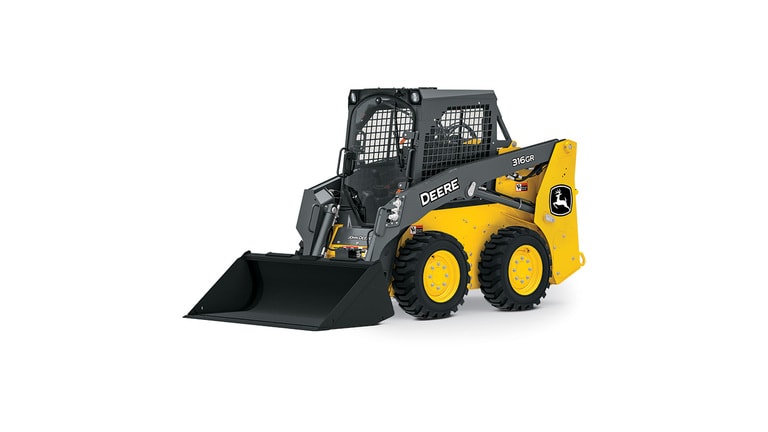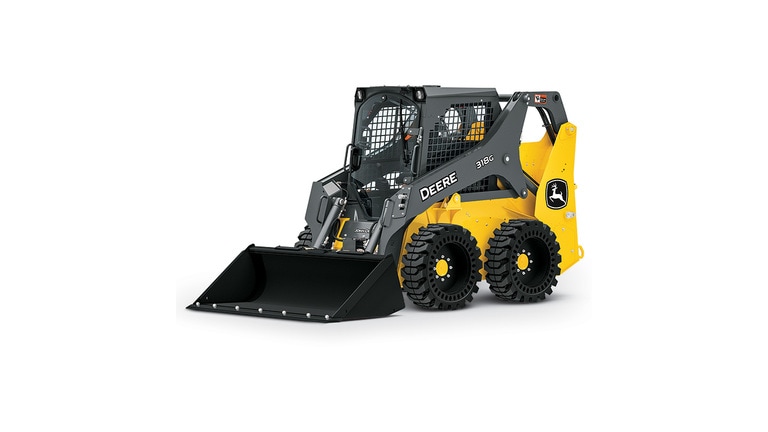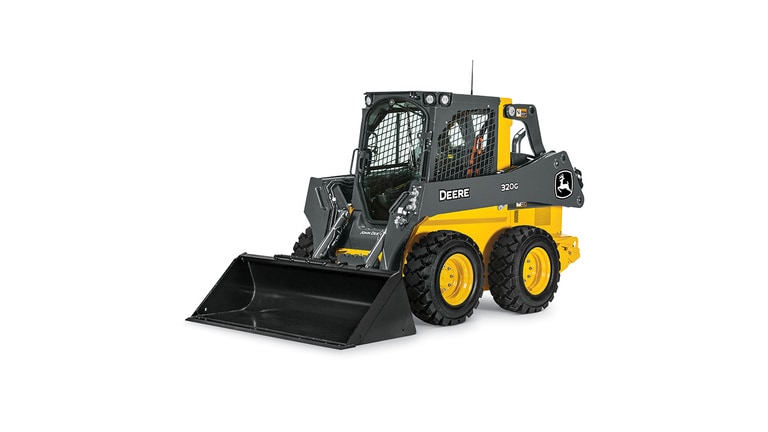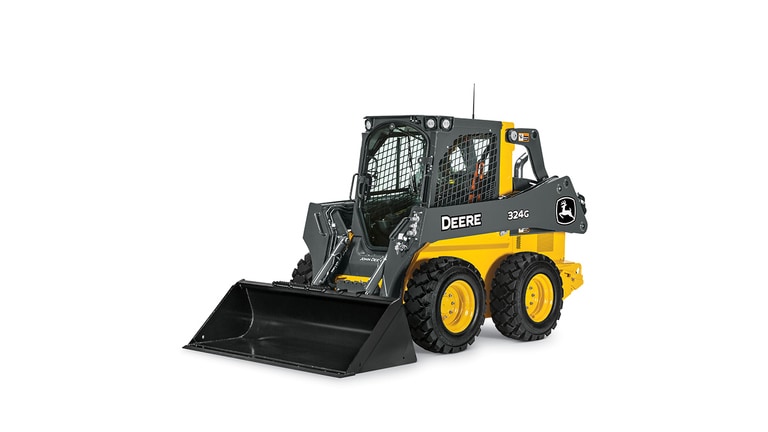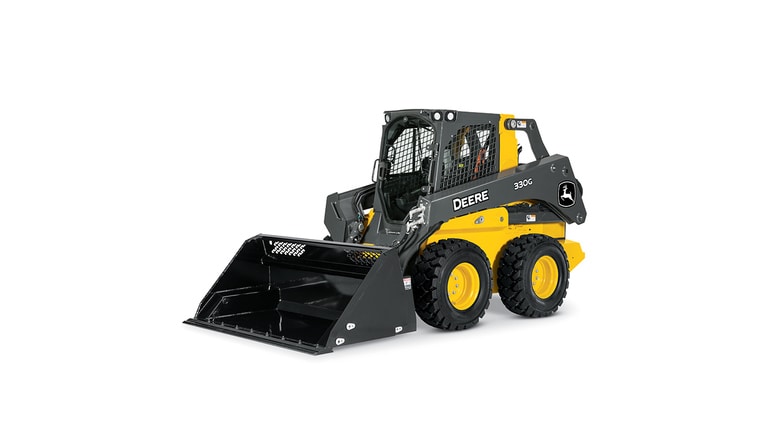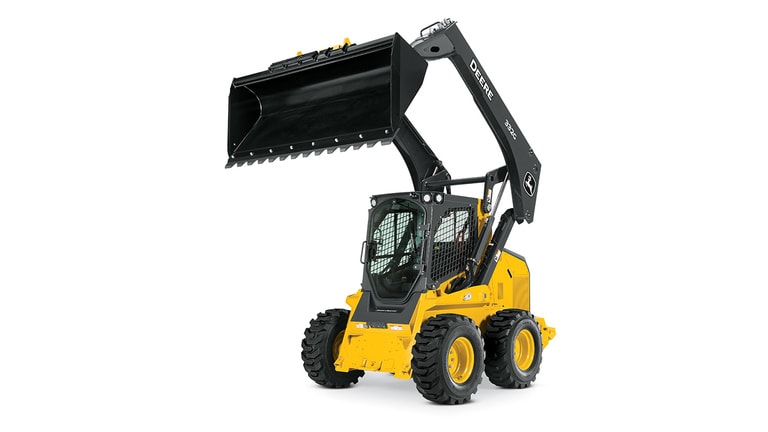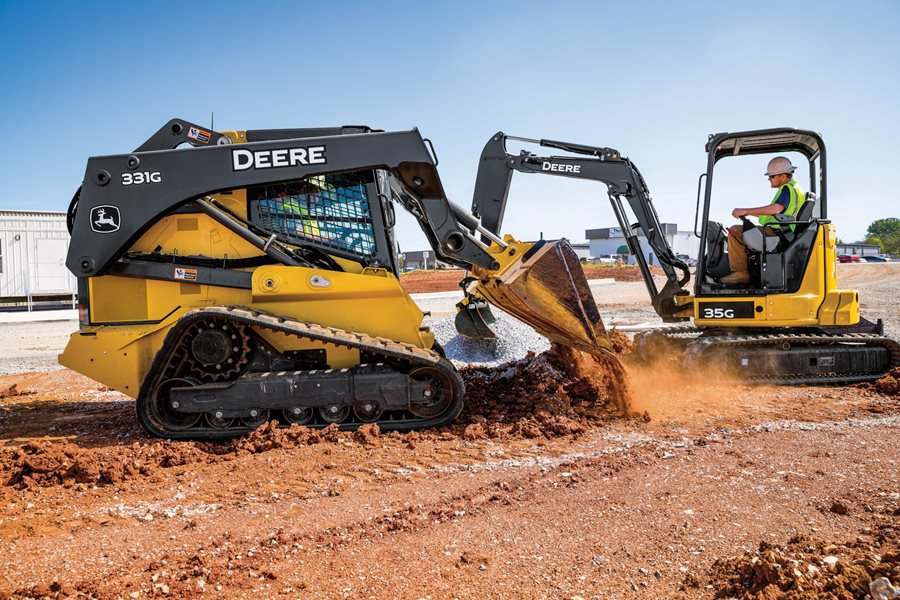
SMALL MACHINES. BIG RESULTS.
Don't let the size fool you. Whether you're acquiring your first machine or adding to a fleet, there's a John Deere G-Series Skid Steer that's all in for your. Four compact models in vertical-lift and radial-boom configurations. With a look and feel like their larger siblings, plus amped-up specs and a wider variety of options, these reimagined do-it-alls have what it takes to fit the way you work, wherever you work
Request a QuoteExplore Skid Steer Models
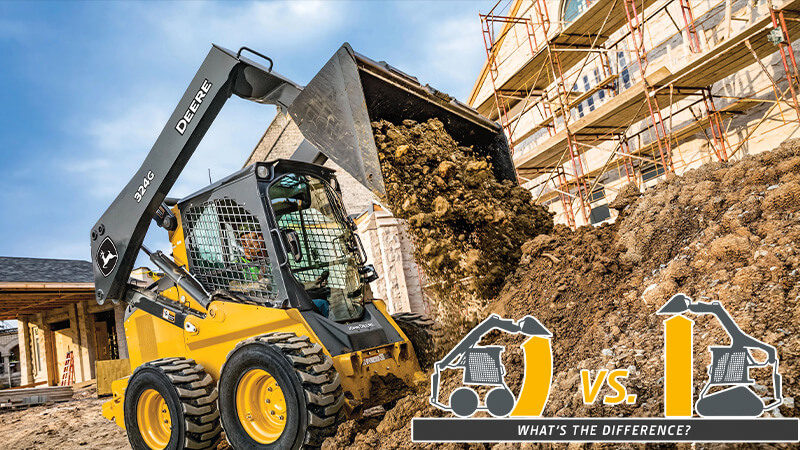
BOOM LIFT: RADIAL OR VERTICAL
These reimagined loaders rise high, pick up heavy loads, and deliver remarkable boom- and bucket-breakout forces. Plus, a low center of gravity and sure-footed balance provide exceptional agility and stability on slopes. Choose between vertical or radial lift to match your application.
RADIAL LIFT More reach at mid-range lift heights; good for digging, grading, and backfilling.
VERTICAL LIFT More lift height and reach at the top of the lift path, for more stability.
______________________________________________________________
Power lifter: Vertical-lift boom rises to a hinge-pin height of 10 feet on the 314G and 318G.
Boom-diggity: Radial-lift booms on the 312GR and 316GR provide powerful digging performance and generous reach at a competitive price. For even more lifting ability, opt for the 314G and 318G with vertical-lift booms that deliver outstanding lifting and truck-loading ability.
Carry more, spill less: Both radial- and vertical-lift designs keep the load close to the machine, for reliable stability. Low center of gravity, 30-degree bucket rollback, optional hydraulic self-leveling, and optional ride control (316GR and 318G only) also help keep buckets full and forks loaded. Add more capacity with up to two sets of counterweights.
Features and Specifications
When considering a skid steer, it's essential to understand the various features and specifications available. Each component plays a significant role in the performance and capabilities of the machine, and these factors impact the efficiency and versatility of the skid steer. By exploring and comprehending these features and specifications, you can make an informed decision and select a skid steer that meets your requirements.

Handheld Remote Controls
Some skid steer models come equipped with handheld remote controls, allowing operators to control the machine's functions from a distance, enhancing safety and convenience.

Remote Access
Certain skid steer models offer remote access capabilities, enabling users to monitor and manage the machine's performance and diagnostics remotely, improving efficiency and troubleshooting capabilities.

Load Capacity
Load capacity refers to the maximum weight a skid steer can safely lift and carry. It is an important specification to consider based on the types of materials and loads you plan to handle.

Tipping Point and ROC (Rated Operating Capacity)
The tipping point is the maximum angle at which a skid steer can safely operate on uneven terrain without tipping over. ROC indicates the maximum weight the skid steer can lift and transport without exceeding stability limits.

Lift Height and Reach
Lift height refers to the maximum vertical distance the skid steer's arms can reach when fully extended. Reach refers to the horizontal distance from the skid steer's center to the furthest point it can extend its load.

Hydraulic Capacity and Flow
Hydraulic capacity refers to the power and capacity of the hydraulic system in the skid steer, influencing the performance of attachments. Hydraulic flow determines the speed and efficiency of hydraulic functions.

Standard Flow, High Flow, and Enhanced High Flow
These terms refer to the different levels of hydraulic flow options available in skid steer models. Higher flow rates allow for increased performance with attachments that require hydraulic power.

Secondary System
Some skid steers feature a secondary hydraulic system that enables the simultaneous operation of multiple attachments, enhancing versatility and productivity.

Dimensions
Skid steer dimensions include length, width, and height, determining the machine's maneuverability and suitability for various work environments.

Tires
The type of tires on a skid steer can affect traction, stability, and performance on different surfaces. Depending on the intended use, options include solid, air-filled, or heavy-duty.

Cabs
Skid steer cabs offer operator protection and comfort. Consider features like visibility, ergonomics, noise insulation, climate control, and additional options like air conditioning or heating.

Horsepower
Horsepower indicates the engine's power output, which impacts the machine's overall performance and capability to handle demanding tasks.

Technology
Skid steers may incorporate various technological features such as telematics systems, advanced controls, and integrated display screens to enhance operational efficiency, diagnostics, and data management.

Engines
The type and specifications of the engine determine the skid steer's power, fuel efficiency, emissions, and durability. Consider factors such as engine size, fuel type, and emissions compliance when selecting a skid steer.
OVER 100+ MODELS OF JOHN DEERE ATTACHMENTS
To get more productivity from your skid steer hook-up one of the many easy-to-use attachments. The ever-expanding lineup includes more than 100 models, so you’re sure to find the right tool for the job. They’re compatible with many comparable brands of machines, too. What’s more, each is backed by legendary John Deere parts, service, and warranty coverage. Add an attachment, and watch your productivity instantly increase.
Skid Steer Frequently Asked Questions
What’s the best way to order a skid steer?
You can click on the “request a quote” button which takes you to a form where you can provide your information. Make sure to select new equipment from the drop-down list. If you’d prefer an in-person option, you can click the “find a dealer” button to locate the nearest dealer to buy a John Deere skid steer.
What’s the difference between a radial lift and a vertical lift?
A radial lift has a single pivot point for the loader arms, while a vertical lift has a more complex type of linkage that facilitates the motion. You can find a John Deere skid steer with either boom geometry. The radial lift reaches further at mid-height, while the vertical lift has more reach at the top.
Do you offer tracked skid steers?
We do offer compact tracked loaders here. Each small skid steer that we sell comes with four wheels. The wheels on the left side are mechanically linked to work together, and the same is true for the right. The left side and right side wheels operate independently.
Are mini and small skid steers the same?
A mini skid steer is smaller than a small skid steer. Generally, both machines can accomplish the same type of work, but mini skid steers can fit into more compact spaces. Small skid steers have an advantage when it comes to frequent digging or material handling.
Are there attachments available for skid steers?
Yes. We offer various attachments for your John Deere skid steer. You can browse products and filter by the part type. You can also identify the part based on the images we provide. Call us at 855-JDParts to make a purchase.


